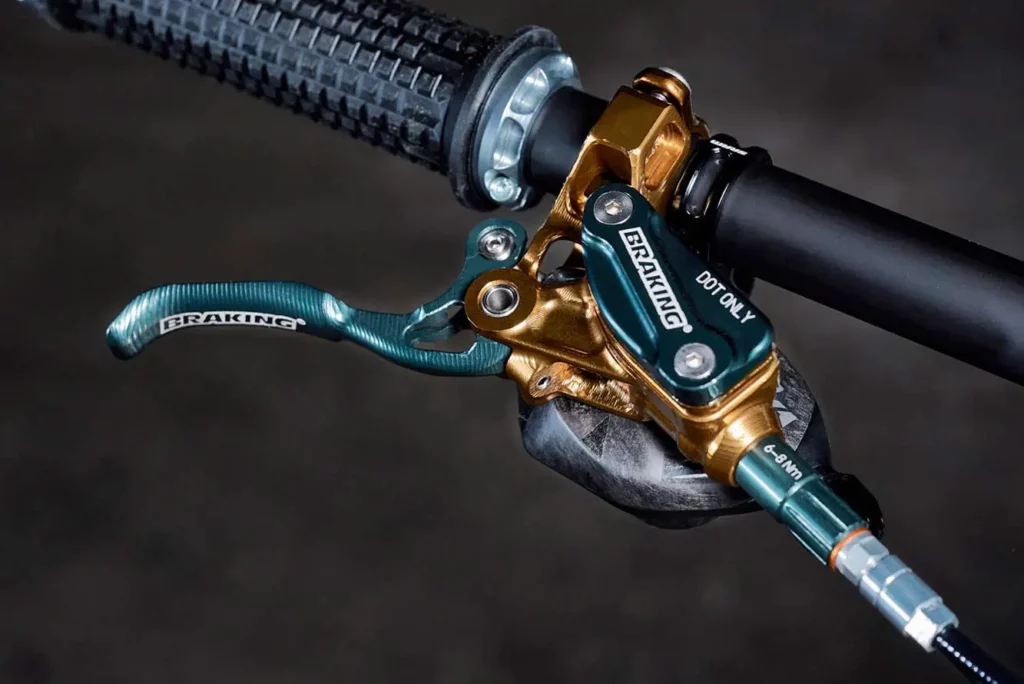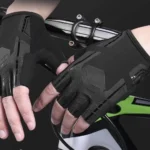
Hydraulic MTB brakes provide better performance compared to their cable counterparts. However, they require more maintenance, specifically brake bleeding. Postponing this crucial maintenance can ultimately result in poor braking performance.
Experienced mountain bikers who ride challenging and technical trails frequently or engage in downhill riding should bleed their brakes at least once every six months. On the other hand, less experienced riders can do it less frequently, say once a year if they ride often, or once every two years if their riding is infrequent.
In this article, I will outline the recommended intervals for bleeding your MTB brakes. These intervals will take into account the frequency of your riding and the style of riding. However, this is not an exhaustive guide, so keep reading to learn more!
Table of Contents
Is bleeding necessary for new MTB brakes?
After purchasing new brakes, it’s worth noting that they come with a factory bleed. However, in most cases, the cables will be too long, necessitating the trimming of the cables to fit the bike. In this scenario, you will need to bleed the brakes after installing and trimming the cable to the appropriate length.
Even if you don’t have to trim the cables, you may still find that the brake levers are too squishy. This can be due to poor factory bleeding or air getting in afterward, making bleeding necessary.
If your brakes are new, you don’t have to do a complete bleeding. You only need to get the air out and complete the oil to ensure optimal performance. After completing these steps, your brakes will be good to go.
What is the recommended interval for brake bleeding?

In general, the more you ride your MTB, the more frequently you need to bleed the brakes. For experienced riders who ride often, bleeding the brakes every six months is recommended. For medium-level riders, once a year is sufficient, while casual riders can do so every two years.
Unfortunately, many mountain bikers don’t give their brakes proper maintenance and subsequently lose out on the performance and benefits of having hydraulic brakes.
If you are a downhill or enduro rider, the performance of your brakes is critical, and you should never overlook their maintenance. You may need to bleed your brakes two or three times a year to ensure optimal performance.
If you mostly ride on forest trails and cross country, bleeding your brakes once a year should suffice.
It’s important to note that you can opt for a complete or quick bleed. A complete bleed involves fully draining the oil from the brakes and is the most effective method for enhancing performance.
If you ride frequently, it’s wise to go for a quick bleed, which provides a quick boost in performance by removing air and completing the necessary oil. A quick bleed is faster and more cost-effective than a complete bleed.
| Riding frequency | Riding style | Barke bleeding frequency |
|---|---|---|
| 1-2 times a month | cross country, trail | once every 2 years |
| 1-2 times a week | cross country, trail | once a year |
| 1-2 times a month | downhill, enduro | once a year |
| 3-5 times a week | cross country, trail | once every 6 months |
| 1-5 times a week | downhill, enduro | once every 6 months (even 3 times a year) |
The table above outlines the recommended frequency for bleeding hydraulic brakes to ensure optimal performance and necessary stopping power for safe riding.
It’s crucial not to overlook the bleeding process if you have hydraulic disc brakes. Reliable brakes are essential and can help you navigate and escape precarious situations while riding.
Is brake bleeding necessary even if I don’t ride my bike frequently?
Even if you don’t ride frequently, it’s still necessary to bleed your hydraulic brakes, albeit at longer intervals. The recommended interval is once every two years, but you can stretch this to once every three or four years.
It’s important to note that the properties of the oil in the brakes will change over time and become less compressible. This translates to decreased brake performance over time.
If you’ve invested in expensive brakes, it’s crucial to maintain them properly. Failing to bleed the brakes at least once every two years will result in reduced performance, essentially rendering your expensive brake system no better than a cheaper one.
There’s no point in investing in quality brakes if you don’t plan to take care of them. Bleeding your brakes at least once every two years will lead to more enjoyable mountain biking rides.
RAED ALSO: How to Install Rubber Handlebar Grips (Easy Steps)
Indications That Your Brakes Require Bleeding
Bleeding your hydraulic brakes is essential for maintaining a safe and reliable mountain biking experience. Neglecting this task can result in certain signs becoming noticeable over time. These indicators include a spongy feeling when pulling the brake lever, which is a clear indication that air has entered the system and must be removed through bleeding. It is also possible to pull the lever back to the handlebar, indicating an excess of air in the system that requires bleeding to restore safety.
Another sign that brakes need bleeding is leaking brake fluid, which often occurs due to damaged seals. It is crucial to fix this issue to ensure the brake’s reliability. Instead of waiting until these symptoms are too apparent to ignore, it is advisable to have a set interval for bleeding your brakes. While waiting may save you some money in the short term, regular bleeding will maintain your mountain bike’s optimal condition and enhance your riding experience.
What are the consequences of not bleeding my brakes?
Regular maintenance of your MTB brakes is essential to maintain their optimal performance. Neglecting to bleed your brakes can lead to a spongy feel and a loss of stopping power. This can compromise your safety while riding.
When sufficient time has passed without bleeding your MTB brakes, your bike’s stopping power can be significantly reduced, making it unsafe to ride. If you notice that you can pull your brake lever close to the handlebars, it’s a clear indication that your brakes require immediate bleeding before your next ride.
To ensure better brake performance and increase your safety while riding, bleeding your MTB brakes is crucial. Failure to do so increases the risk of crushing and crashes due to poor braking power.
To Sum Up
Bleeding your MTB brakes on a regular basis is crucial to ensure optimal braking performance and maintain your safety while riding. By doing so, you’ll be able to enjoy the great braking performance that you paid for.
Experienced riders, who push the limits on technical trails, will benefit the most from increased brake performance. It is recommended that they bleed their brakes at least every six months. However, if you frequently ride on demanding terrain, bleeding your brakes more often is advisable.
For new riders who are still developing their skills and are not yet tackling technical trails, bleeding their brakes once every one or two years is sufficient.
By bleeding your brakes regularly, you can be confident that your bike will stop on a dime when you need it to. This will increase your safety on the trails and allow you to focus on enjoying your ride.
Other Articles
- Electric vs. Traditional Bicycle Bell: Which Is Right for You?
- Summer vs. Winter Bicycle Gloves: How to Choose the Right Pair
- Best Road Bikes Under $1,500
- How Long Does It Take to Bike 6 Miles?
- How to Install Rubber Handlebar Grips (4 Easy Steps)








